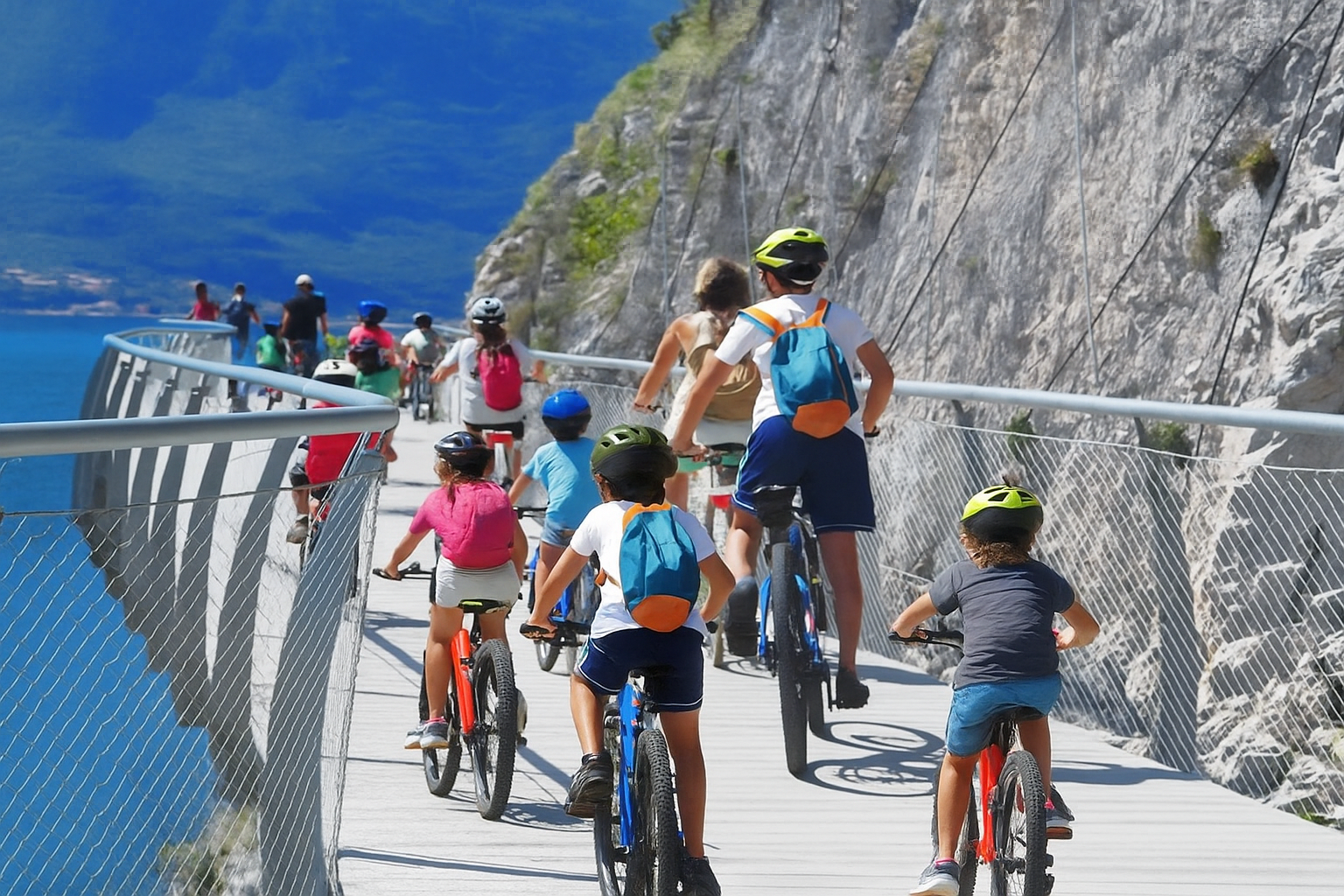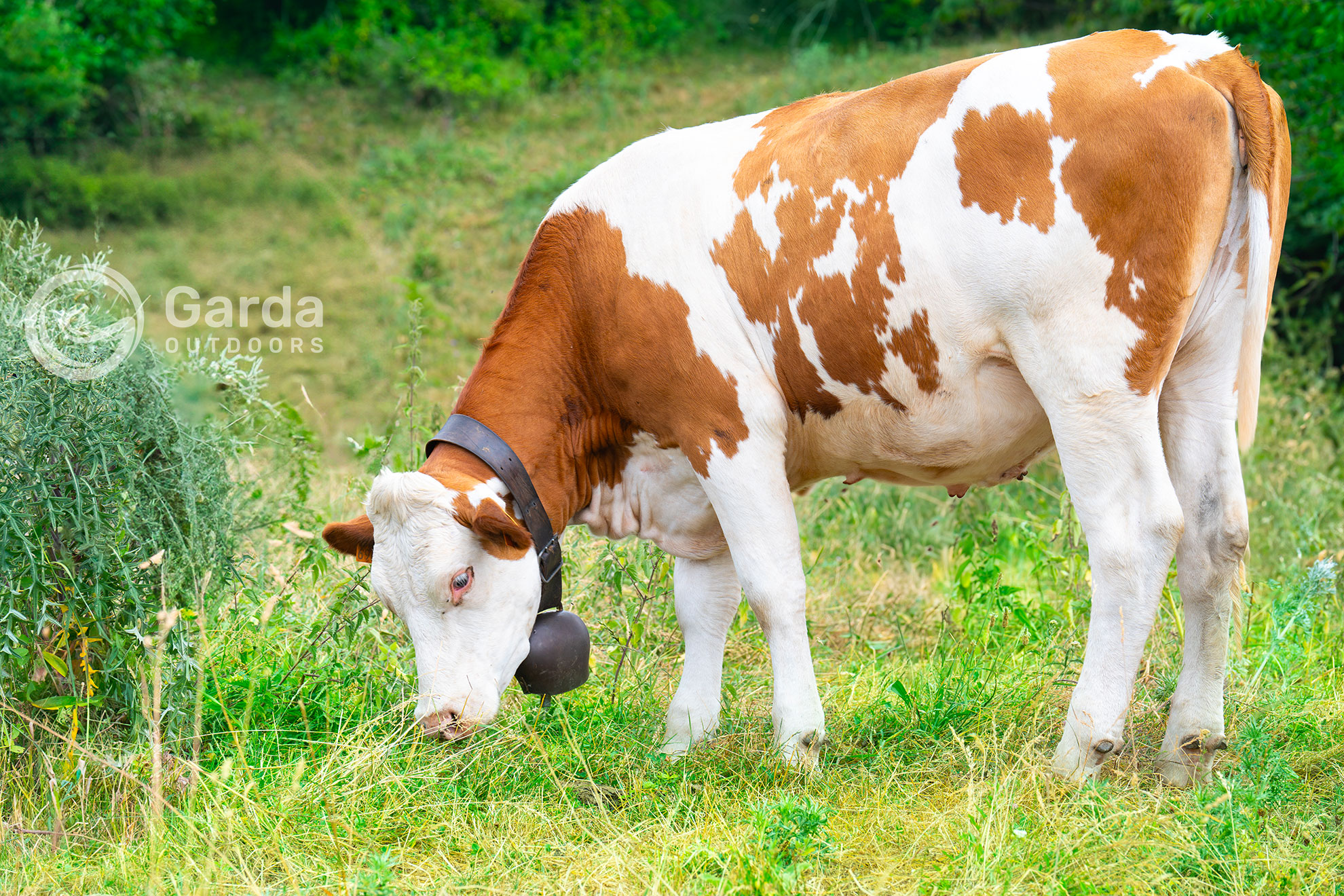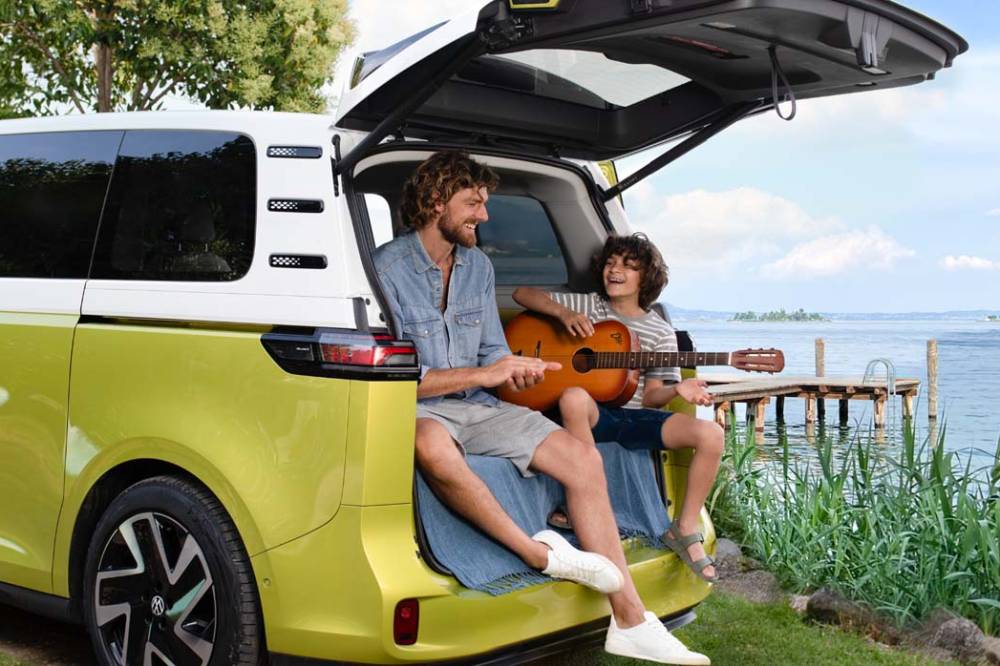Dear Outdoors, in this article I will tell you about the beautiful village of Pai, through the eyes and enthusiasm of Silvana, who was born there and loves it madly, and Michelaldo, born in 1936, who still lives there and keeps its history and anecdotes.
Get ready, it will be like being with family, sitting in the kitchen in front of a coffee among many stories and confidences.
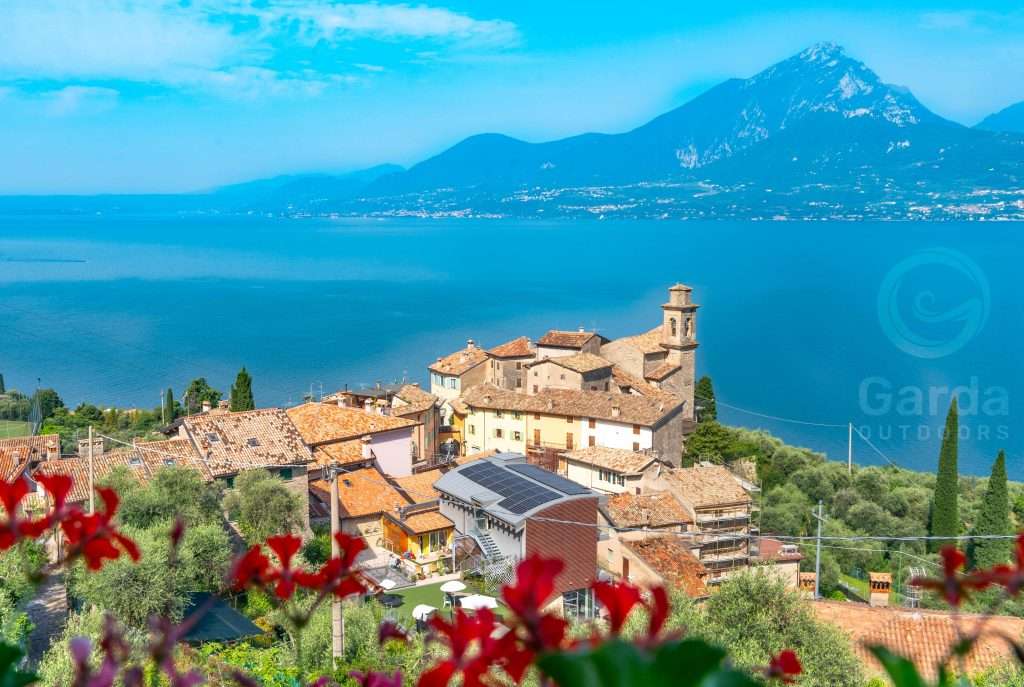
Pai is a small fraction of Torri del Benaco (located 7 km further north) and is divided into: Pai di Sotto (which includes the town along the lake shore) and Pai di Sopra (perched on the slopes of Monte Baldo at 130 meters high) with splendid views over the lake.
But our very kind “paiaroi” (which in the local dialect means ‘inhabitants of Pai’) are keen to specify that there are also 6 districts in its territory, to better identify some neighboring areas: Cà Tronconi (the northernmost on the border with Brenzone ), Cabarsele (above Cà Tronconi), La Casetta (located further south towards Crero and the Tibetan bridge), Bus de la Volp (Buco della Volpe – located further south above the Tibetan bridge – here once there was a house that the villagers called Casa d’ogni ben -House of all goods- because all types of fruit were found there), Piaghen (on the lakefront, further south of Pai di Sotto) and Passoera.
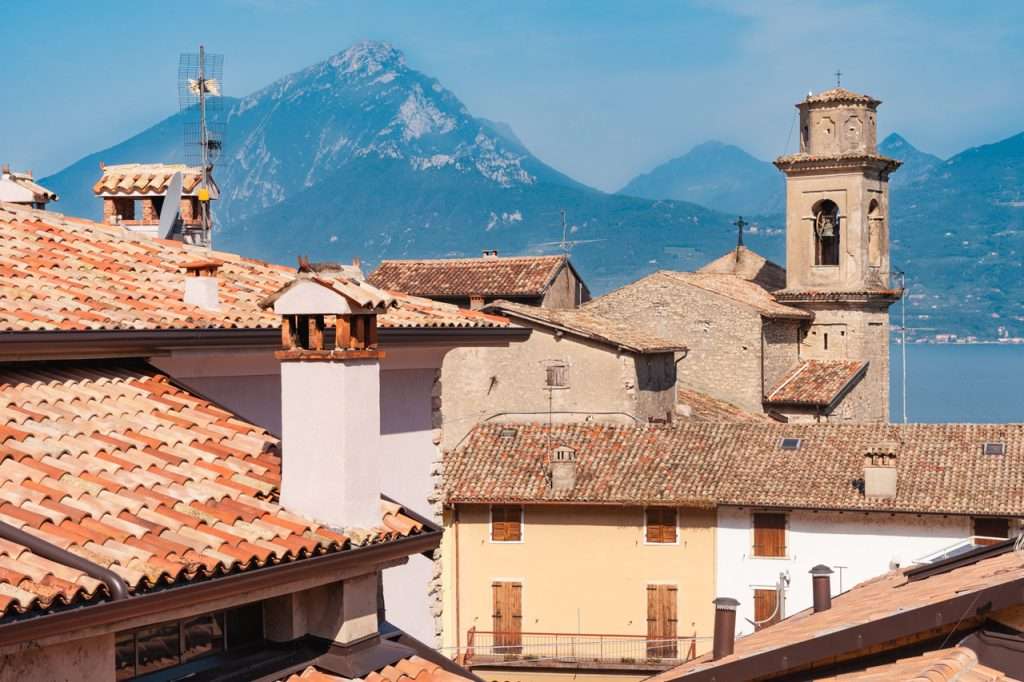
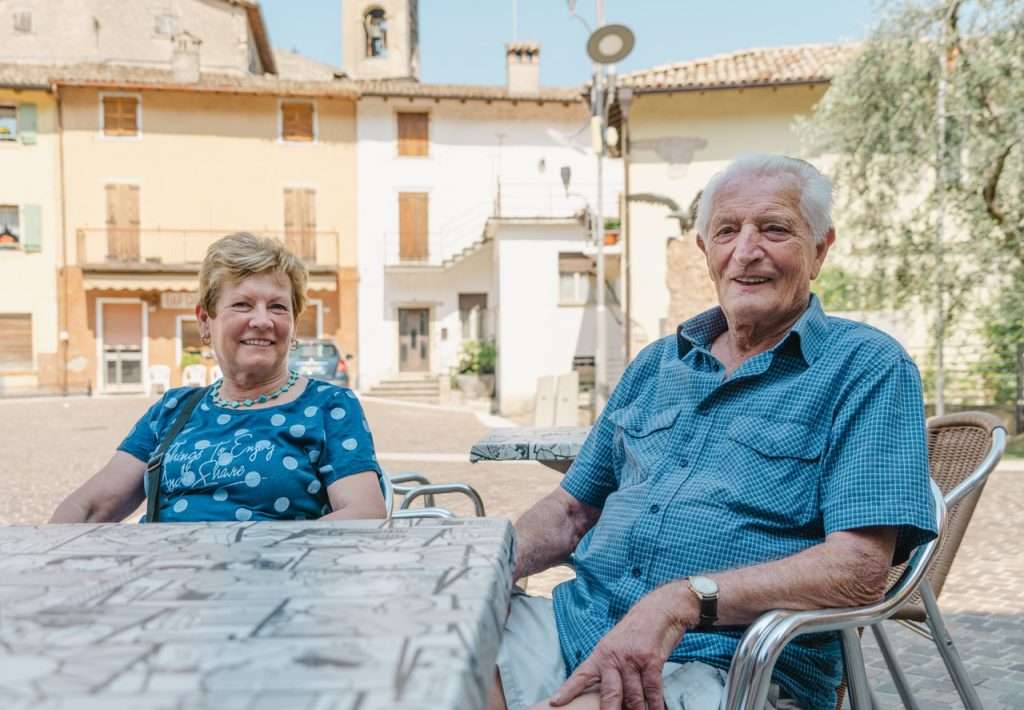
Brief historical notes.
Pai di Sopra is the oldest nucleus and we know of it since the beginning of the 10th century. Here once stood a castle with fortifications, demolished by Barbarossa, of which few remains now remain.
The ancient chapel of that castle has been preserved, enlarged in the 17th century, which has become the current Church of San Marco.
Pai di Sotto instead, with its Romanesque church of San Gregorio from the 12th century, was a parish until the mid-15th century when the local Countess, so the tradition tells, old and full of ailments, had the ancient chapel promoted to parish of the castle in Pai di Sopra, more comfortable for her because it is closer to her residence.
In Pai di Sotto there was also a factory; initially a spinning mill for processing silkworms which then, no longer profitable, was converted into the production of switches and electrical insulators in porcelain.
Pai di Sotto was also the first to venture into tourism, with hotels (noteworthy is the back of the postcard in the photo gallery below, in which the hotelier sent an estimate for a stay which in July 1936 cost 15 lire a day with pension complete – 0.0077 euros) and, where there is the ancient tower, even a disco (which made the people of Garda dance from 1972 to 1980).
The name Pai seems to derive from the “Palli”, ancient pile dwellings found in the area, which changed into the current one over time: “Pali sive Pai” mentions a document from 1372.
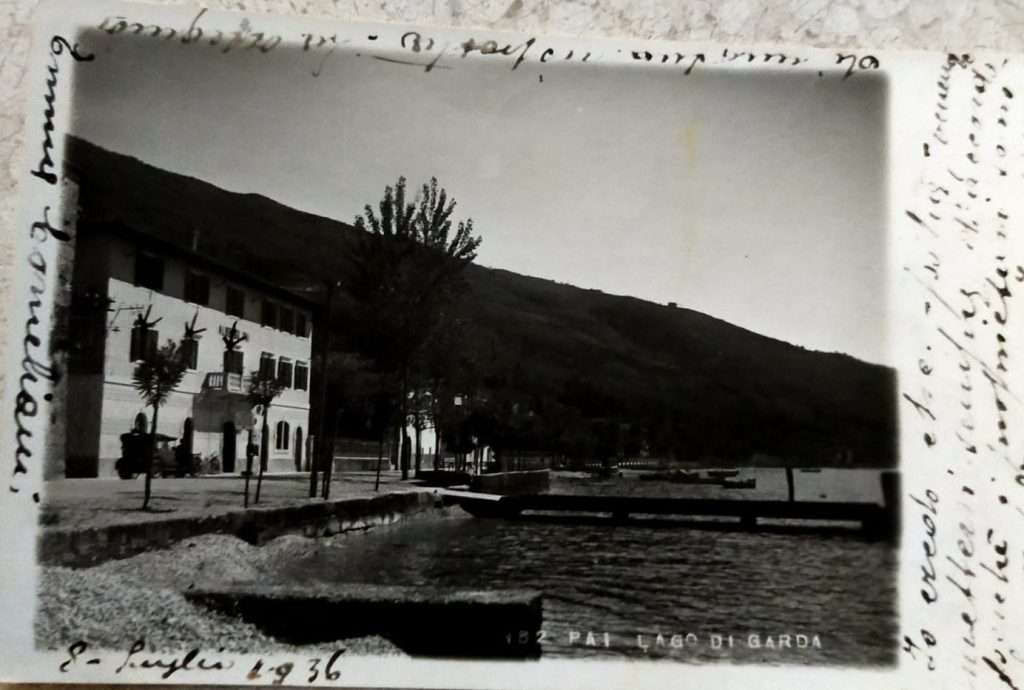
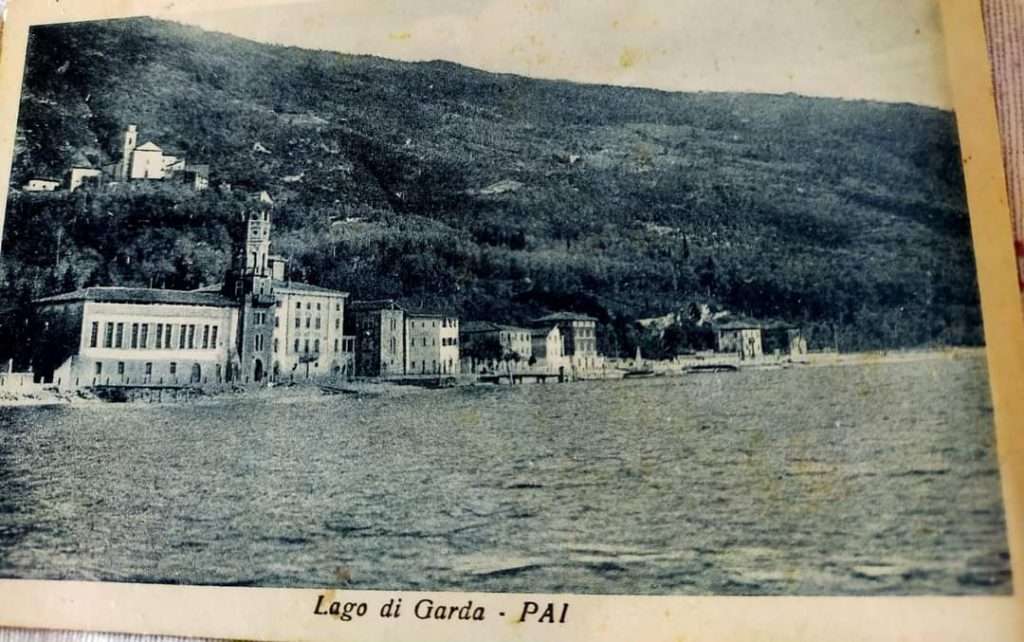
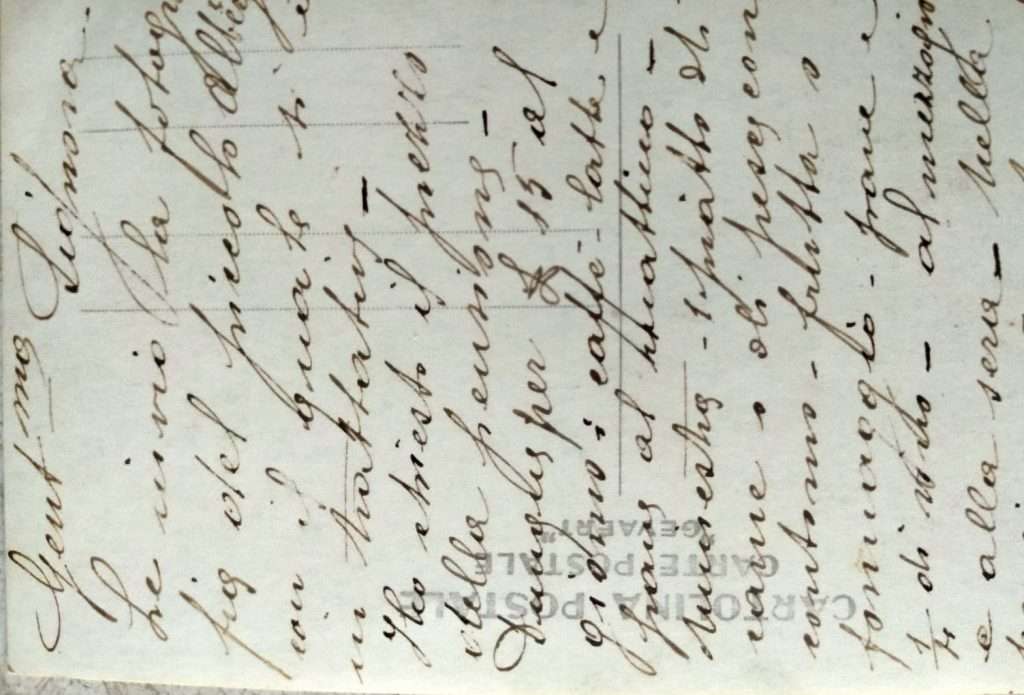
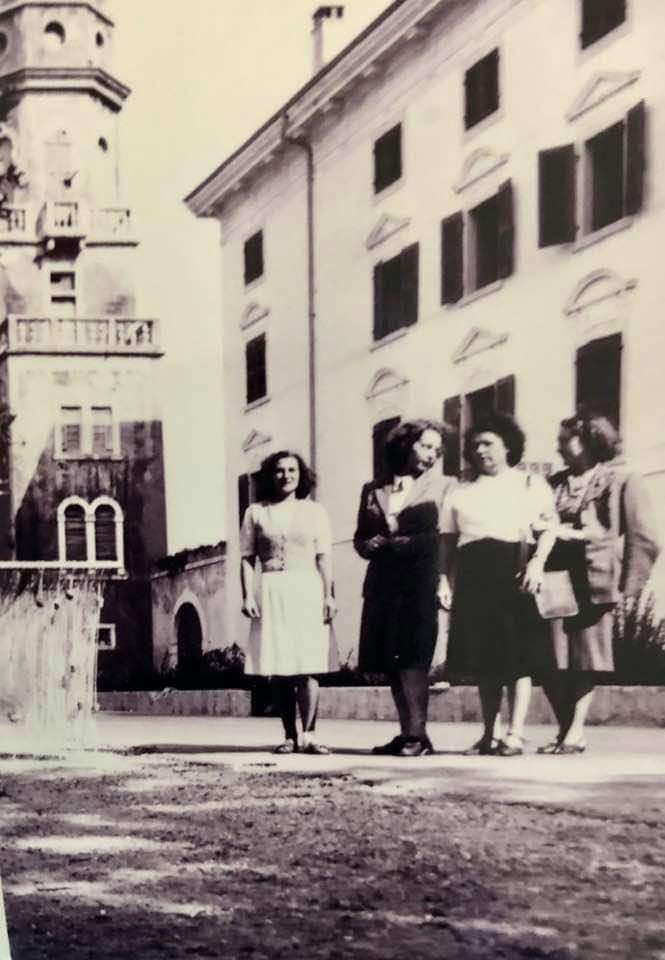
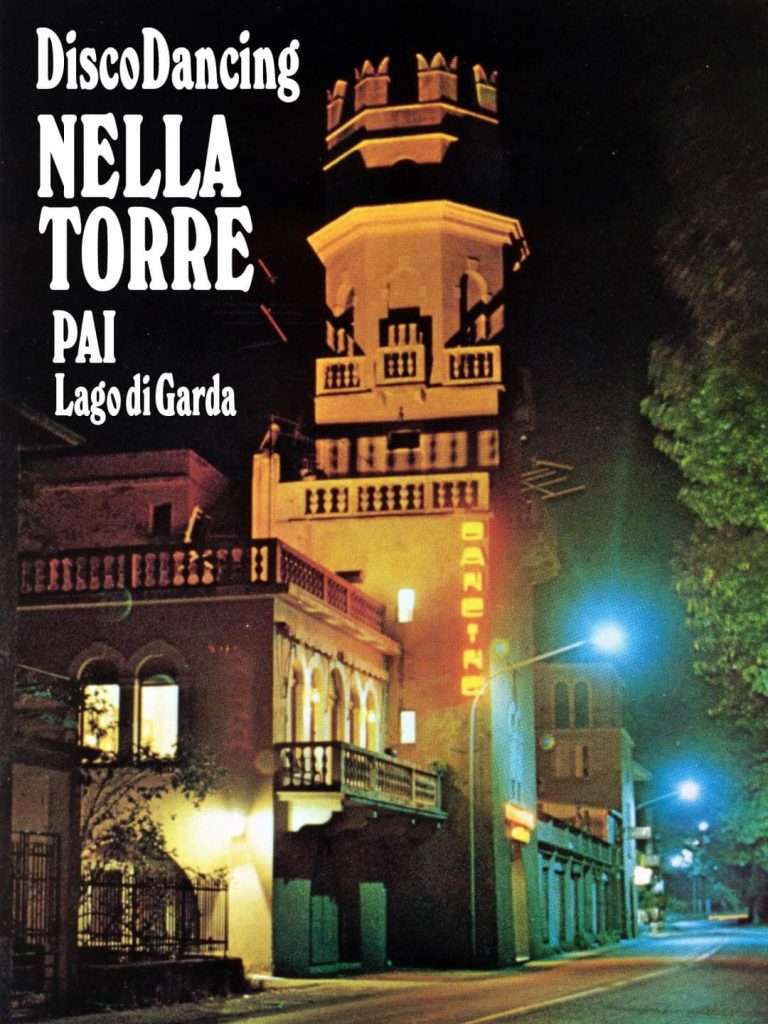
What to do and see in a day trip of Pai di Sopra.
The historic alleys and Piazza San Marco.
To fully immerse yourself in the beauty of the village of Pai di Sopra, you need to be curious and enter the alleys with which it is dotted. Breathtaking views of the lake will open up, romantic corners, flower-filled balconies and courtyards and… beautiful painted capitals.
Noteworthy is the one in Via dell’Angelo, commissioned by a miner to protect him at work. It was painted by Eugenio Vangelista, a well-known painter born in the lower Verona area who lived his life in Pai.
Here everything revolves around Piazza San Marco, the heart of the village, where there are bars and restaurants to enjoy the quiet and atmosphere of the past. And it is from a balcony overlooking this little paradise that I meet Graziella, Michelaldo’s sister, who proudly says to me: “Do you know that I am the oldest in the village?”. So I take a photo of her, which I know made her happy, like finding herself published here, among the portraits that characterize the town.
In the square there is also another capital painted on the wall of a yellow house; “that house was once the village shop”, says Silvana.
There is also a short coffee break with my travel companions, in which I asked Michelaldo to tell me some funny anecdotes. He laughs, with his lively blue eyes, replying that they were making a lot of jokes and bad luck; so he begins to tell (strictly in dialect): “I was building a house, when suddenly a storm broke out. We all sheltered under a roof and the boss asked me to go get a flask of wine. On the way, I saw a girl putting on make-up, who ran away as soon as she saw me. But she left her powder in the window, which used to be put in big round boxes. I took it, and instead of powder I put chalk!”. Needless to tell you that we burst out laughing and I personally was also a little moved, thinking about the genuine jokes of the past, compared to what we hear today on the news.
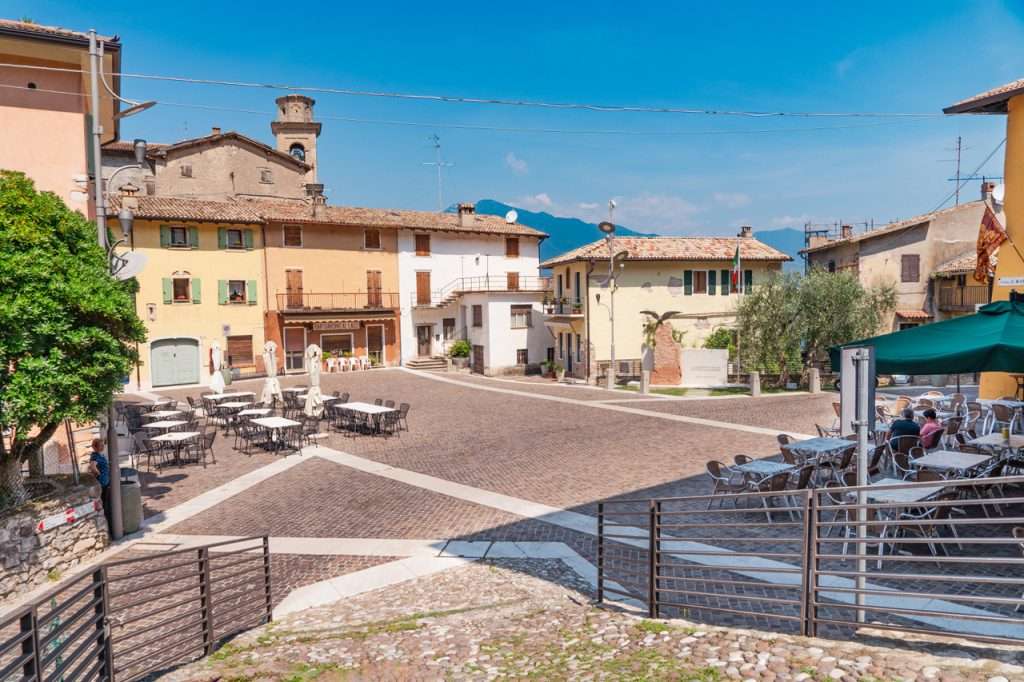
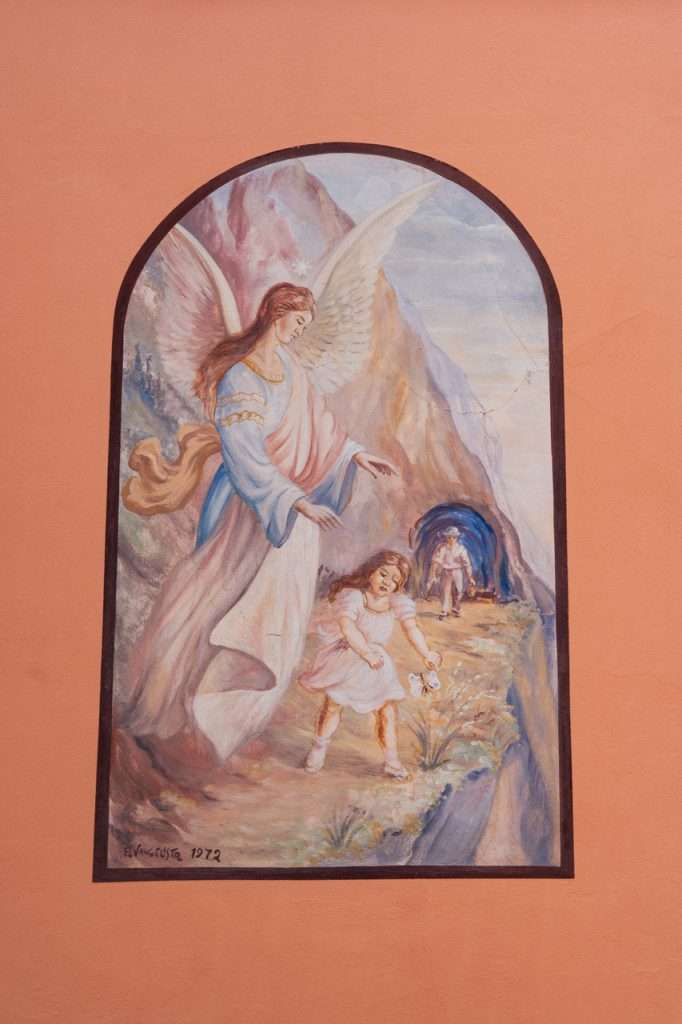
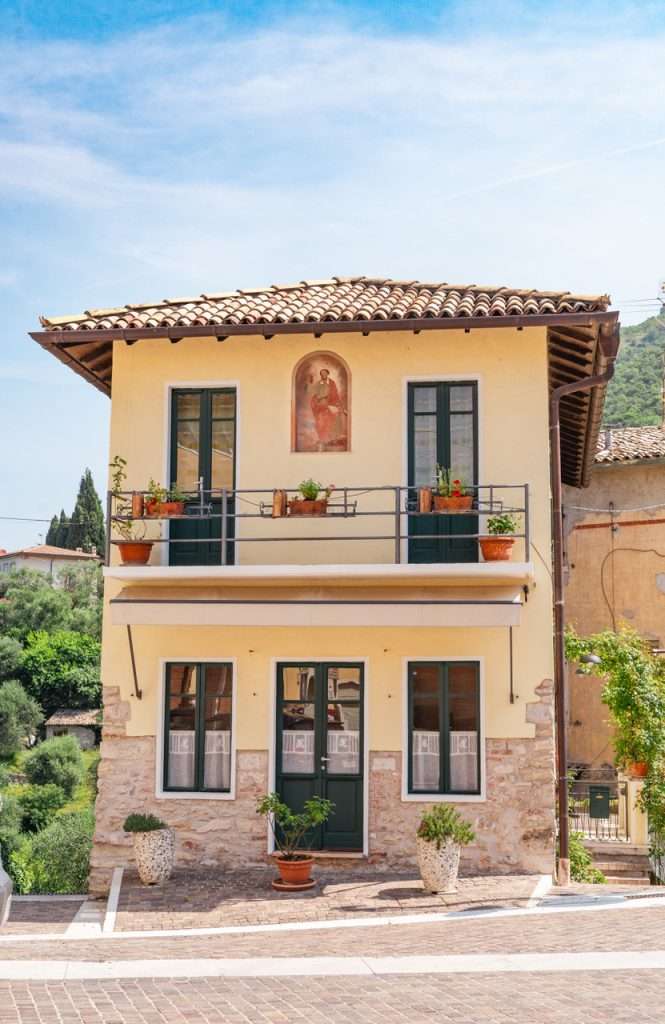
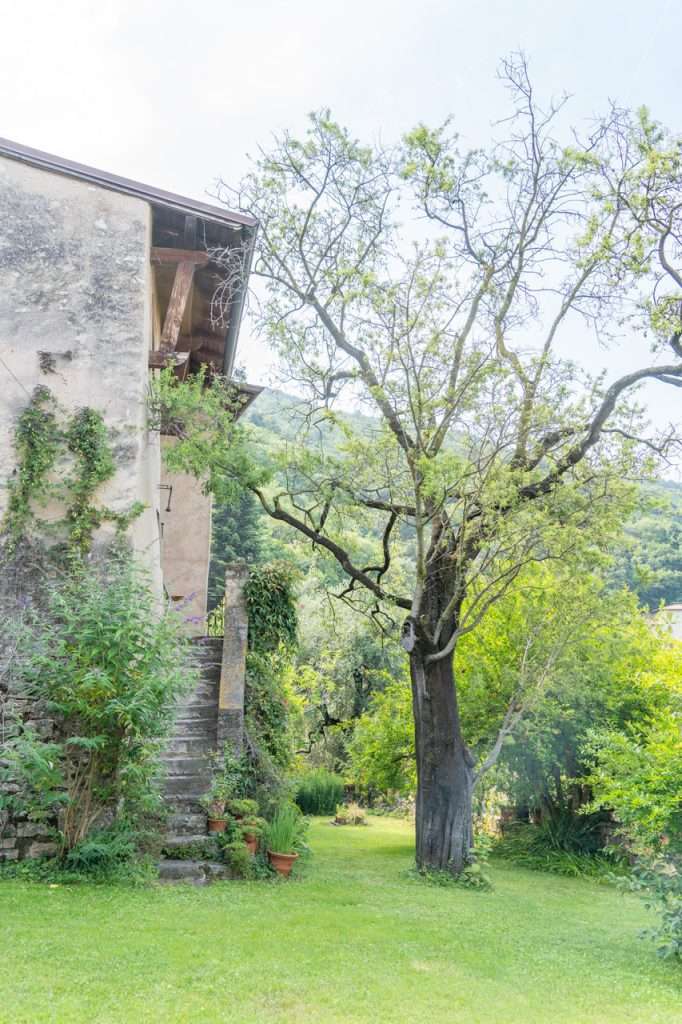
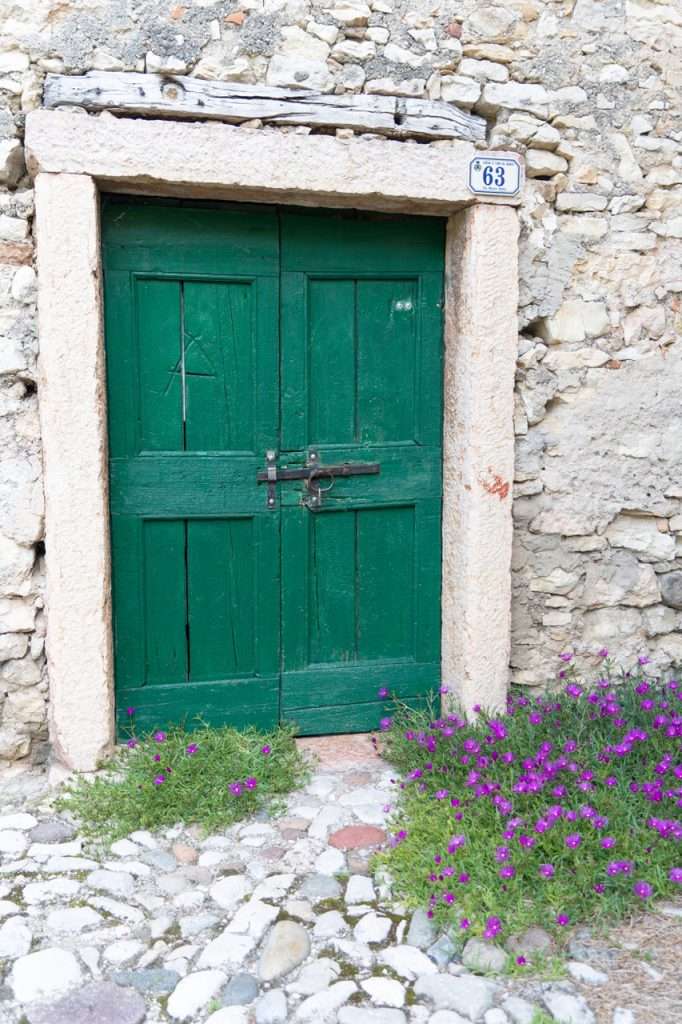
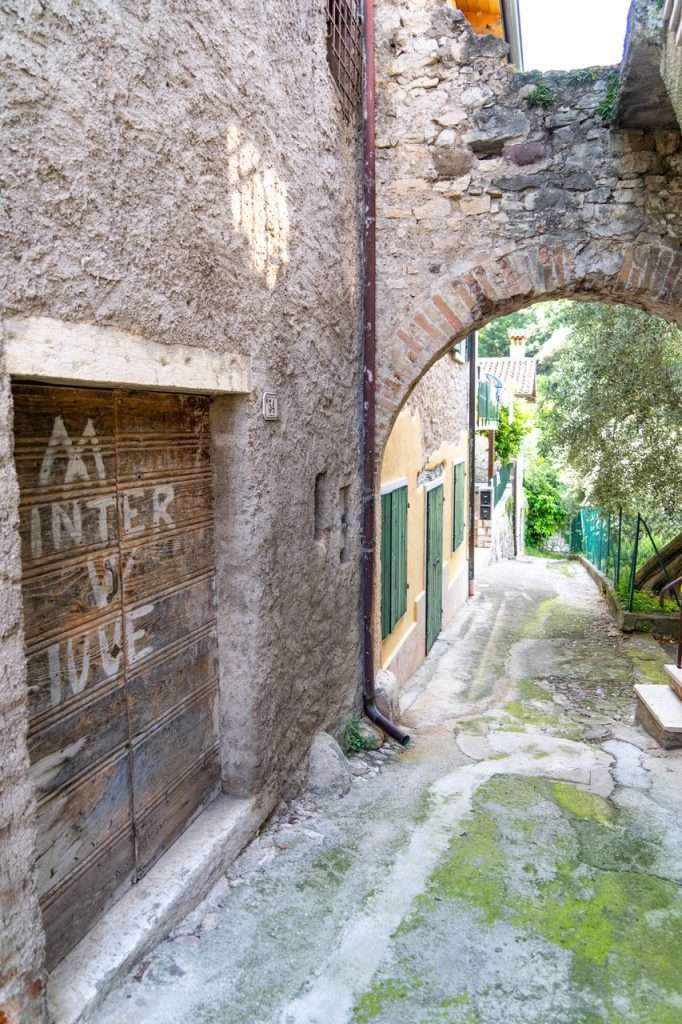
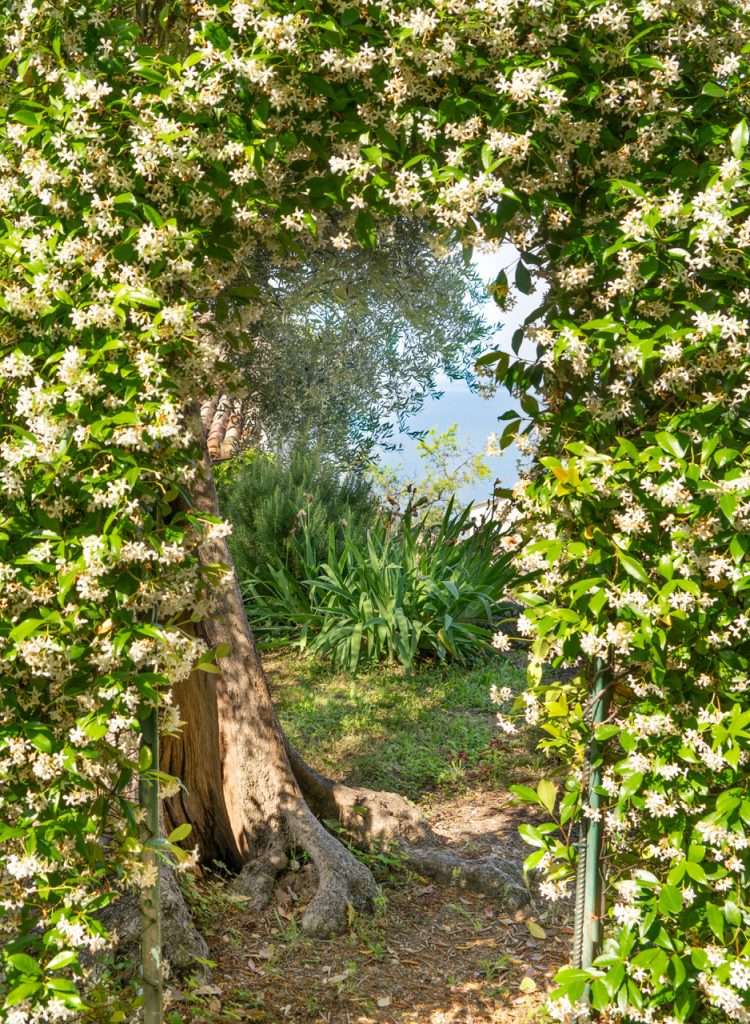
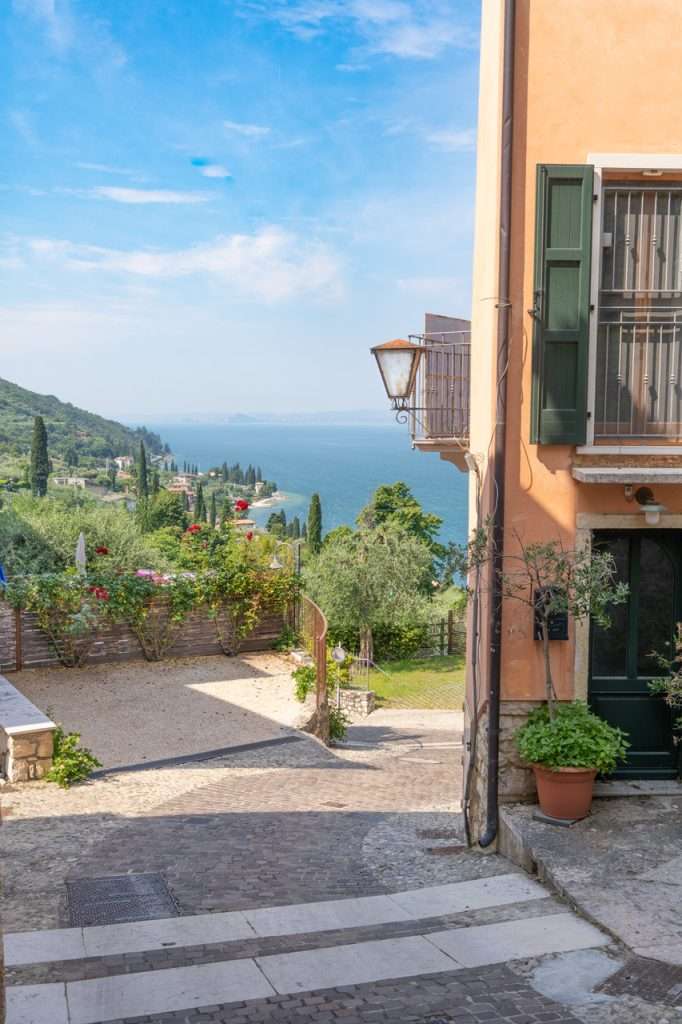
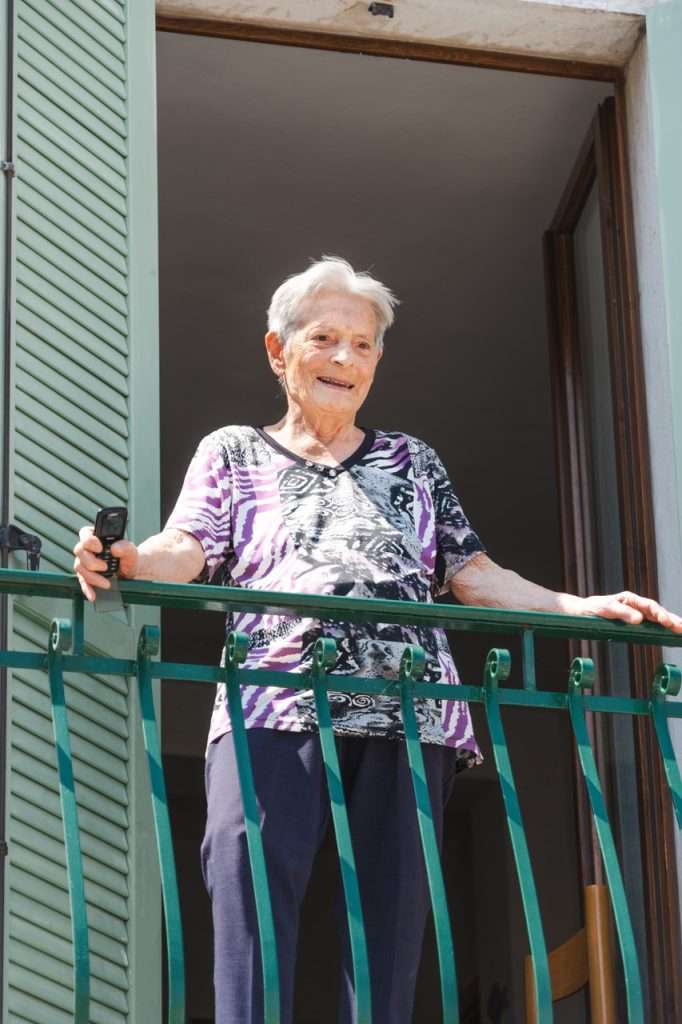
The “Fountain”.
While in Pai di Sotto (and so everywhere on Lake Garda), clothes were once washed directly in the lake water, in Pai di Sopra instead a large and beautiful wash house was built, called a “fountain” by the locals, whose base The support is in fine Verona marble.
Even today it is fed by a small mountain stream that descends from “la val” (the valley above).
You can find it going up from the road that leads to the center of Pai di Sopra, on the left, and it can be reached on foot via a staircase; first, however, look at it from the roadside, it will seem like you are entering a painting.
To the right, in the middle of the flourishing vegetation, you will instead see the small valley with the stream and a wave of incredible coolness will give you refreshment during the summer days (I would have planted a chair there in front of it, since the temperature was pleasant!).
Obviously today the wash house is in disuse, but it still works perfectly. A show!
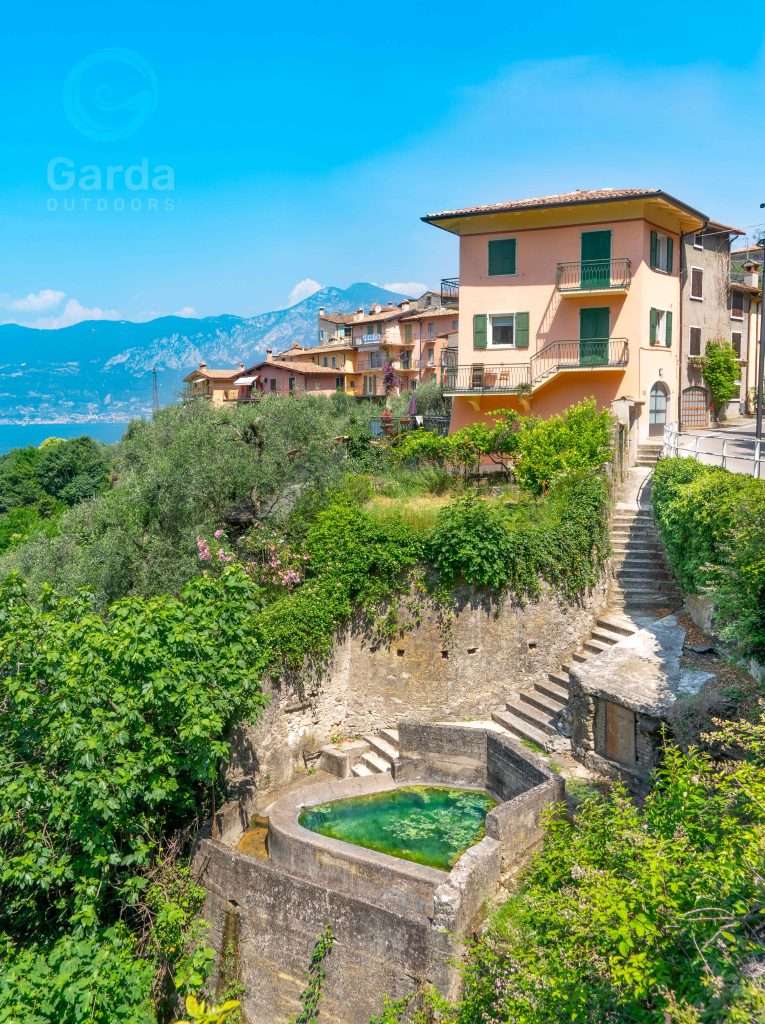
Church of San Marco Evangelista.
As already explained in the historical notes, the church of San Marco Evangelista was initially the private chapel of the castle. The current church was consecrated on 10 May 1512 and enlarged between 1703 and 1705. The neoclassical gabled façade is in a super panoramic position, embraced by a terrace almost overhanging the lake. Inside it preserves a wooden statue of the Madonna and Child (15th century), the baptistery from 1522 and frescoes from the 14th/15th centuries.
But I’ll tell you the real gems now: as soon as you pass the gated vault to enter the terrace/external courtyard of the church, a closed door goes unnoticed on the right. “Now there is the boiler room there” says Michelaldo with his beautiful set of keys in hand, “but, now walled up, there is a secret passage that led up to Pai di Sotto. The exit is armored by a grate, in a private house down by the lake.”.
Then surprisingly he opens the doors of the old rectory, uninhabited for years. Inside there is a small entrance with an ancient stone staircase (I think it is a piece of the old castle left standing). On the ground floor the living area; “Here we children came to watch TV. Once upon a time only the priest had it!” Silvana exclaims. Upstairs, among the old furniture there is a wardrobe with all the ancient registers (of centuries!); “A Brazilian couple came here looking for the origins of their Italian grandfather, and thanks to these registers they found them” Michelaldo recounts with great happiness. The adjoining room is the bedroom, with a window that opens onto a small terrace from which to enjoy a unique view of the church bell tower and all of Lake Garda.
It was a great gift to be able to enter, as were the illuminating words of Don Giovanni Andreoli (who died in 2003), deeply loved by the whole community because he was a man of great spirit, goodness, charity and ability to listen; leaving the church we read “here one enters to love God and one goes out to love one’s neighbour”. Instead, next to the entrance to the rectory is one of his numerous writings; I found especially these words very consoling and full of hope: “I have not abandoned you, I have only gone before you”.
Important note: the Church of San Marco is almost always closed because the village does not have a priest who lives there permanently. To be sure of being able to visit it, you need to ‘take advantage’ of the masses, arriving there a little earlier so as not to disturb: Saturday evenings at 18.00 and Sunday mornings at 10.00.
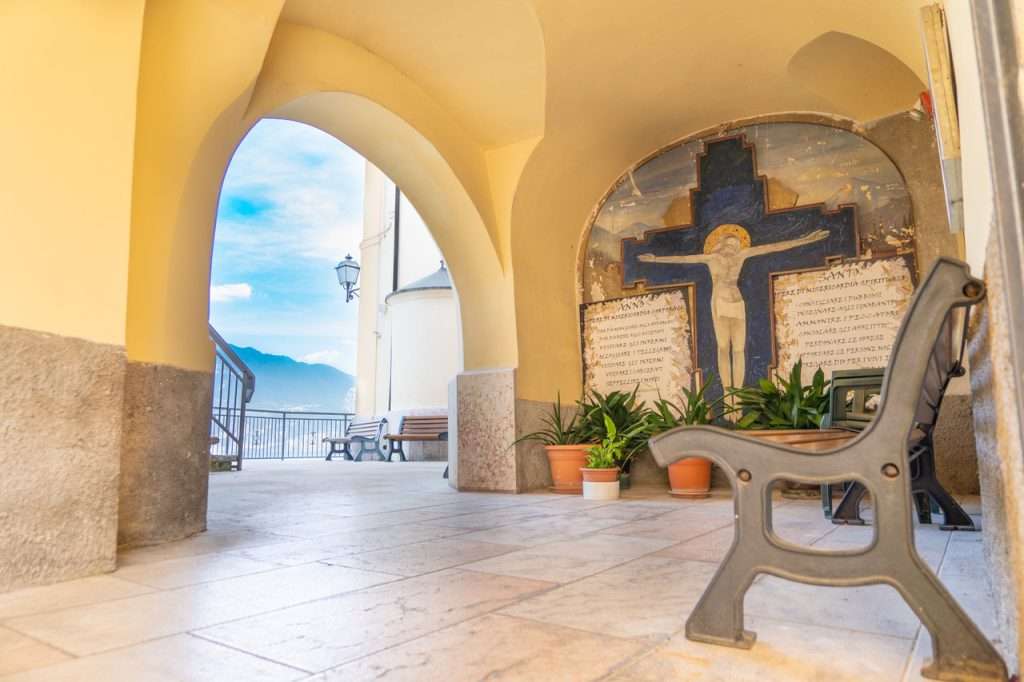
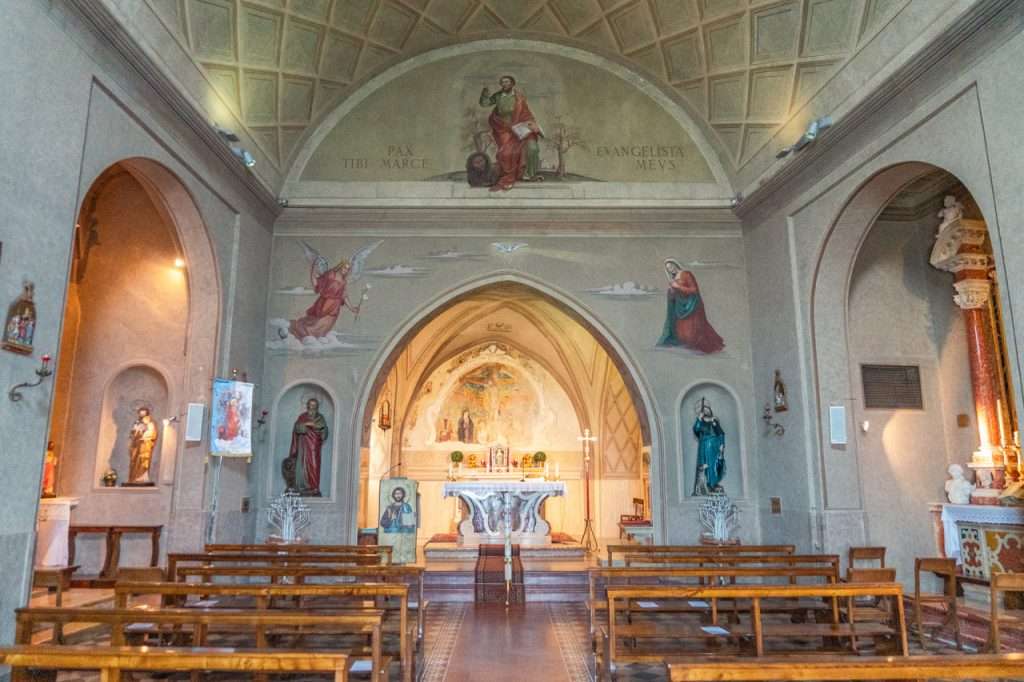
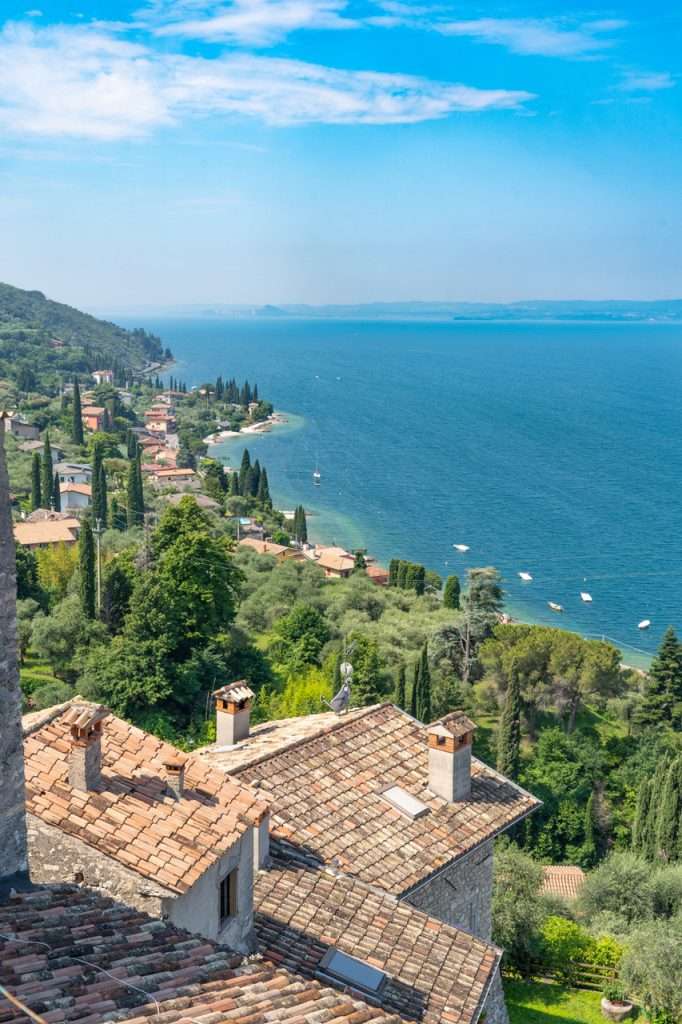
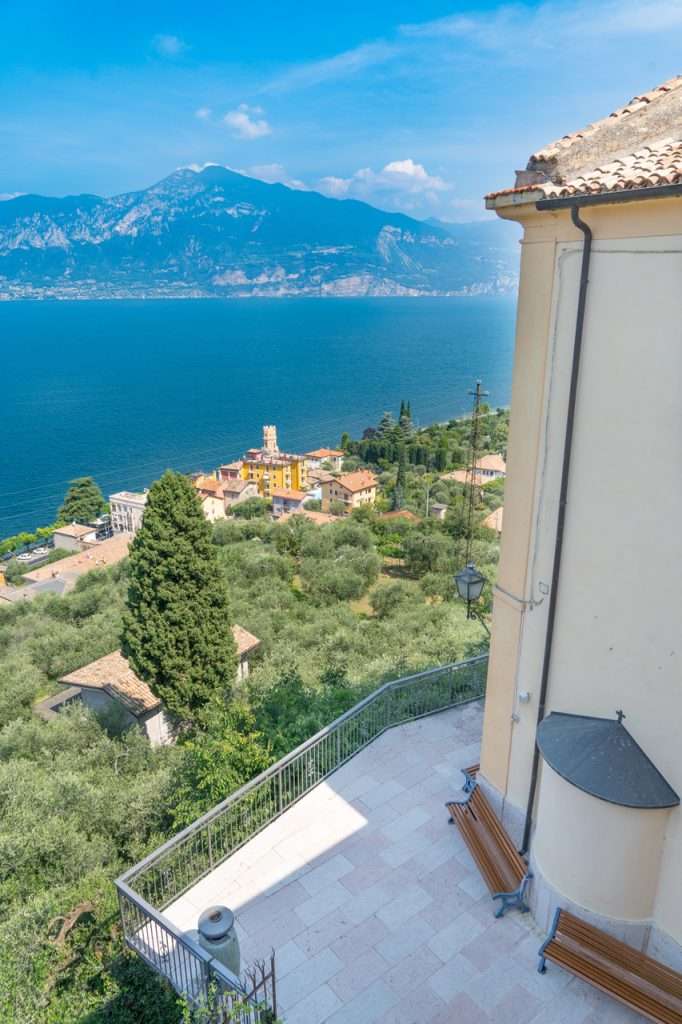
The Calchera (limestone).
The calchera is an ancient oven used to obtain lime. Looking at it, it looks like a sort of small stone house with a single entrance hole and no roof.
In the past, it was filled with limestone rocks and wood and left to burn for 6-8 days, continuing to stoke the fire which caused the oven to reach a temperature of 1000°C. Then the quicklime was extracted which after various procedures became the putty to make the mortar.
It can be reached starting from Piazza San Marco, taking Via Monte Baldo uphill. Initially you pass through the suggestive alleys, then take a forest path on the left which leads to the calchera in a couple of minutes. An opportunity not to be missed to be able to enjoy other beautiful views of Pai di Sopra, Pai di Sotto and the lake.
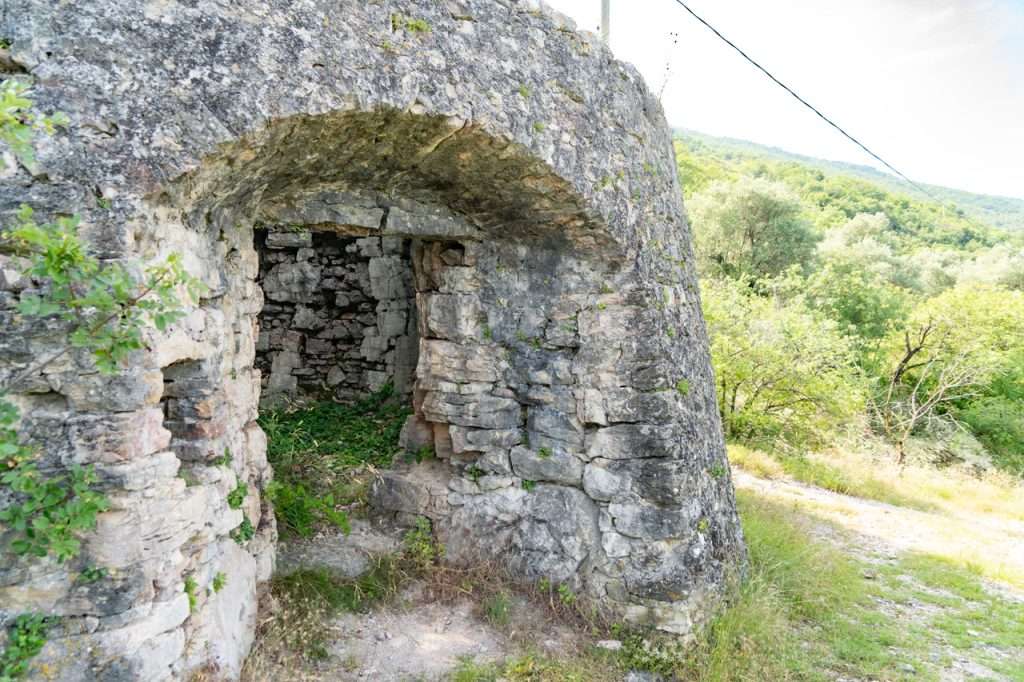
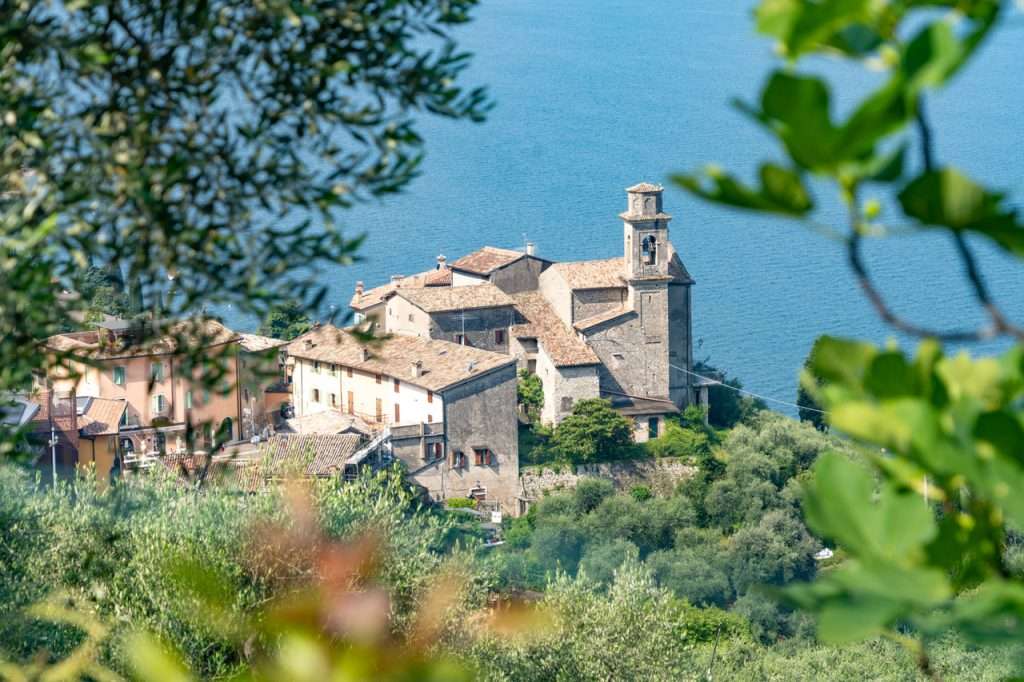
Trekking to the Tibetan bridge of Val Vanzana.
At the entrance to Pai di Sopra, on the right, the path starts to reach the adrenaline-pumping Tibetan bridge of Val Vanzana, among beautiful views of the lake. The path is uphill, walkable in about 20-25 minutes.
The bridge was built in 2019, is 34.7 meters long, placed at an altitude of 42 meters from the stream below.
It is equipped with a non-slip walkway (which makes it more usable than traditional Tibetan bridges) and can carry up to 15 people at a time.
Crossing it, if you want to continue the path, in another 20-25 minutes you will arrive at another beautiful hamlet of Torri del Benaco: Crero. For all the info click here.
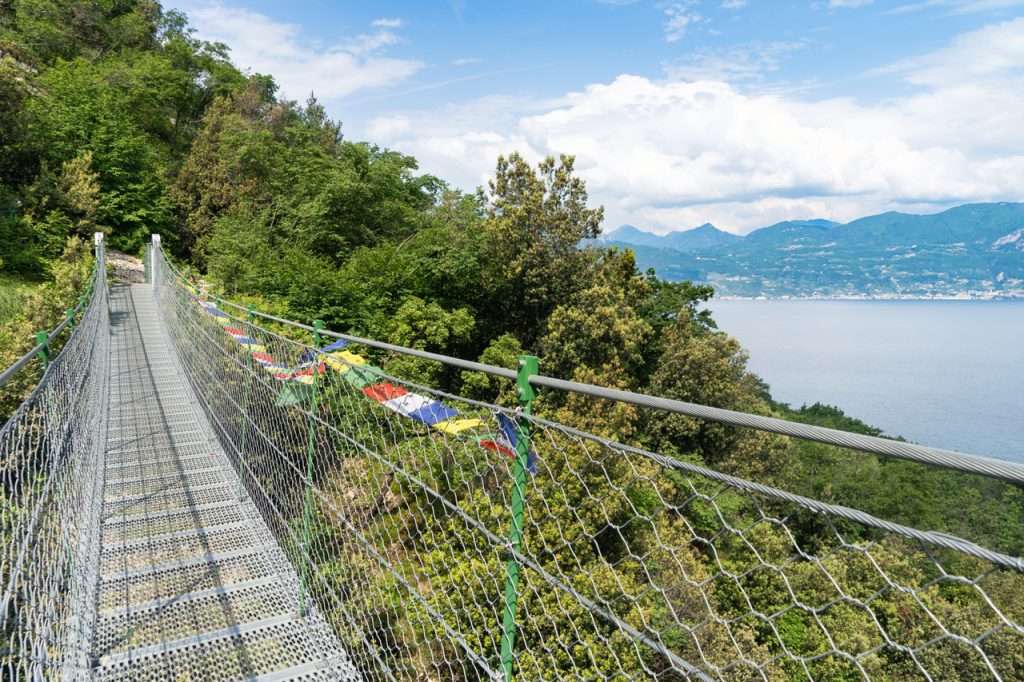
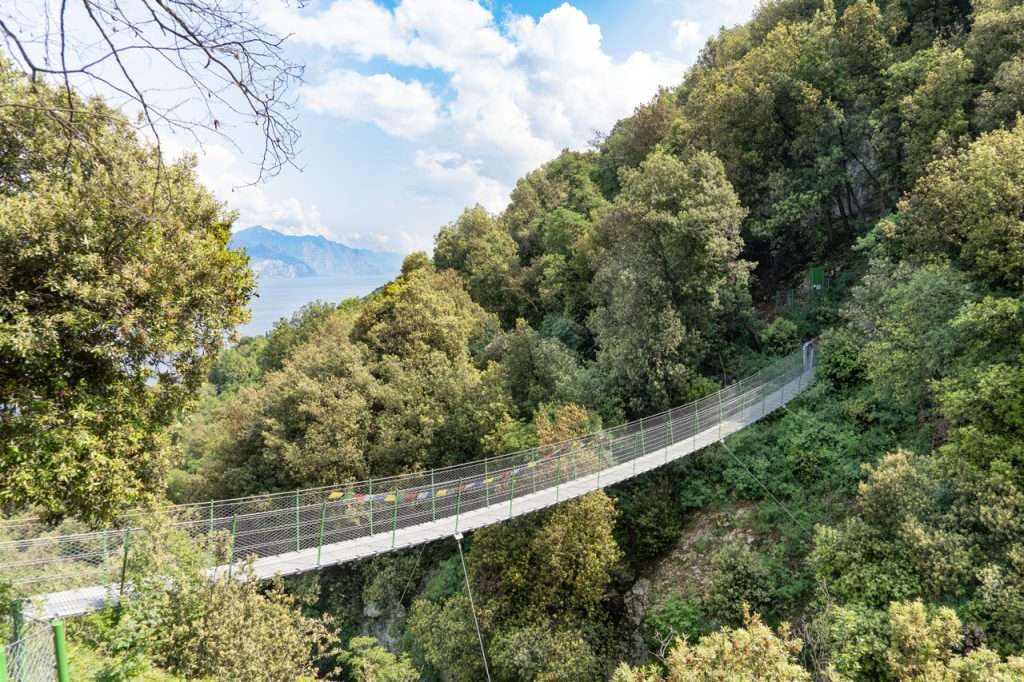
Tanella cave.
A special mention should be made to Grotta Tanella, which at the moment cannot be visited but which we hope will be usable again by tourists.
This cave is located on the path that also leads to the calchera, turning right near it, and develops in the heart of the mountain for 400 metres; presents spectacular environments created by the effect of water on the rock: meanders, galleries, stalactites and stalagmites of various sizes and colors formed over the centuries. A little curiosity: the temperature in the cave is a constant 12°C all year round.
Walking with Silvana, we meet Maurizio, a fellow villager, who shares this memory about the cave: “when we were kids we always went there to play, but at the time we only had candles to light up. One day it went off in the middle of the route and I used the zip on my pants to turn it back on again”. How masterful, I thought!
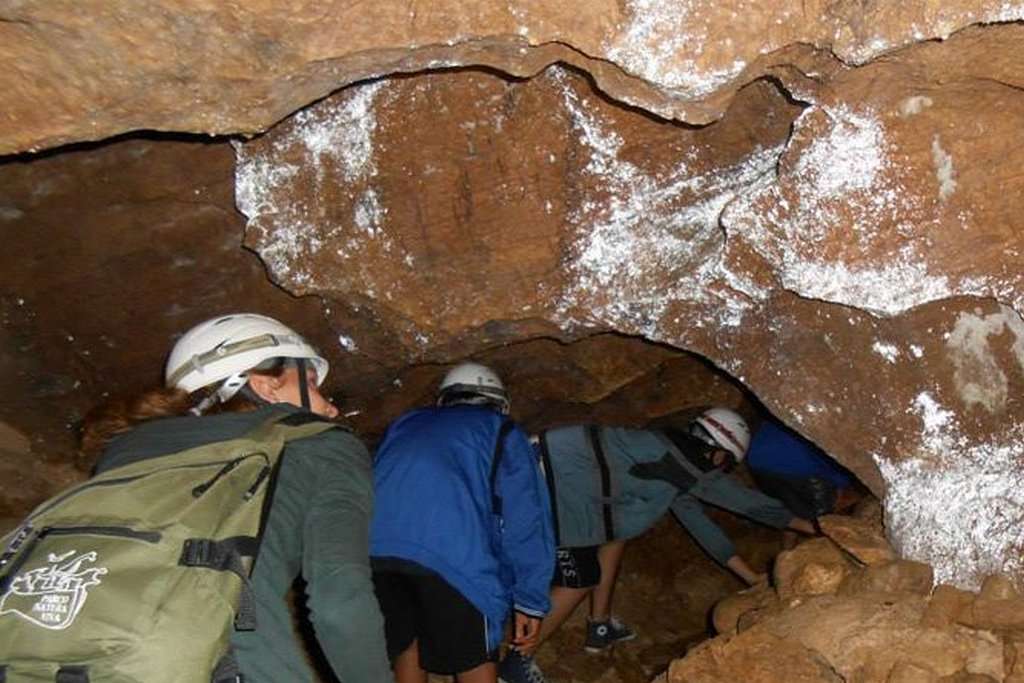
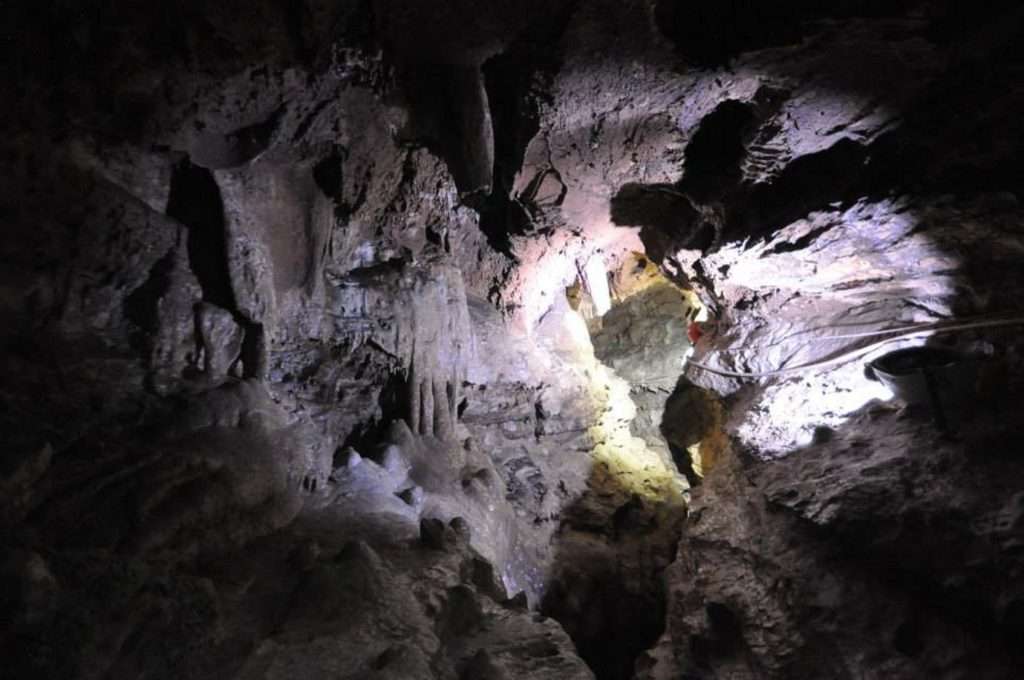
What to do and see in a day trip of Pai di Sotto.
The cemetery and the Church of San Gregorio Magno.
The Church of San Gregorio Magno is in Romanesque style built around 1300. Inside there are beautiful frescoes by Giorgio Da Riva (the same author who also embellished the church of Campo di Brenzone).
It is located inside the cemetery in a beautiful panoramic position. In the external courtyard in front of the church there are many family tombs with period photos and engraved dedications. If you have time, stop and read some of them, they are a beautiful testimony of the past.
You can reach the cemetery and the oratory with a nice walk (advice: in front of the cemetery there are only two parking spaces). From the lakefront take Via Giosuè Carducci uphill, at the crossroads you will find a capital dedicated to San Marco dated 1841, keep left and at the end of the street you will have reached your destination.
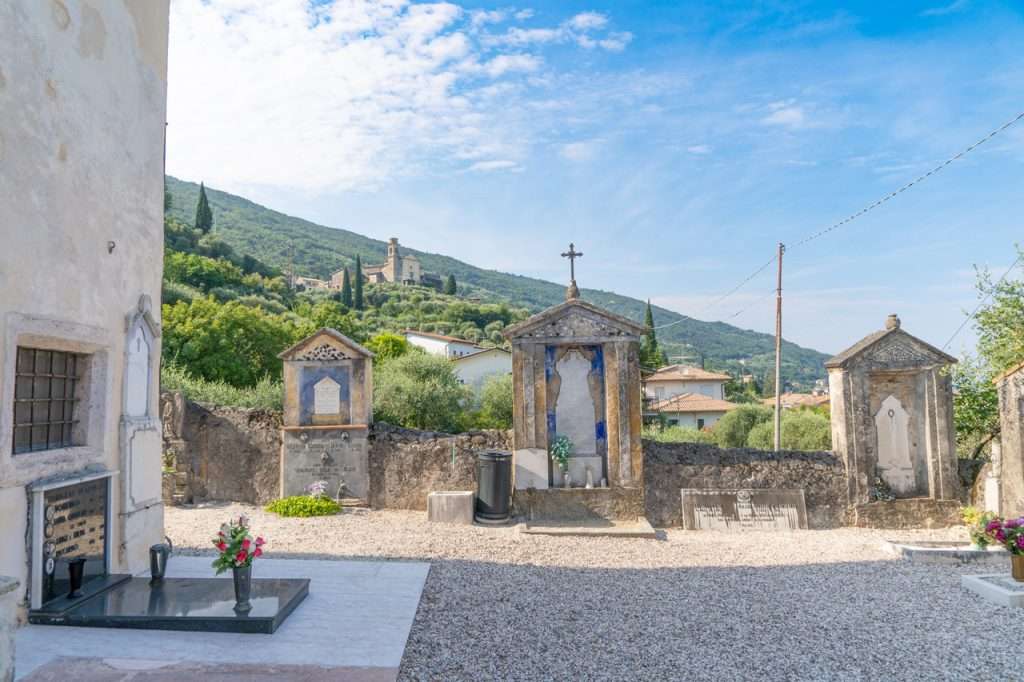
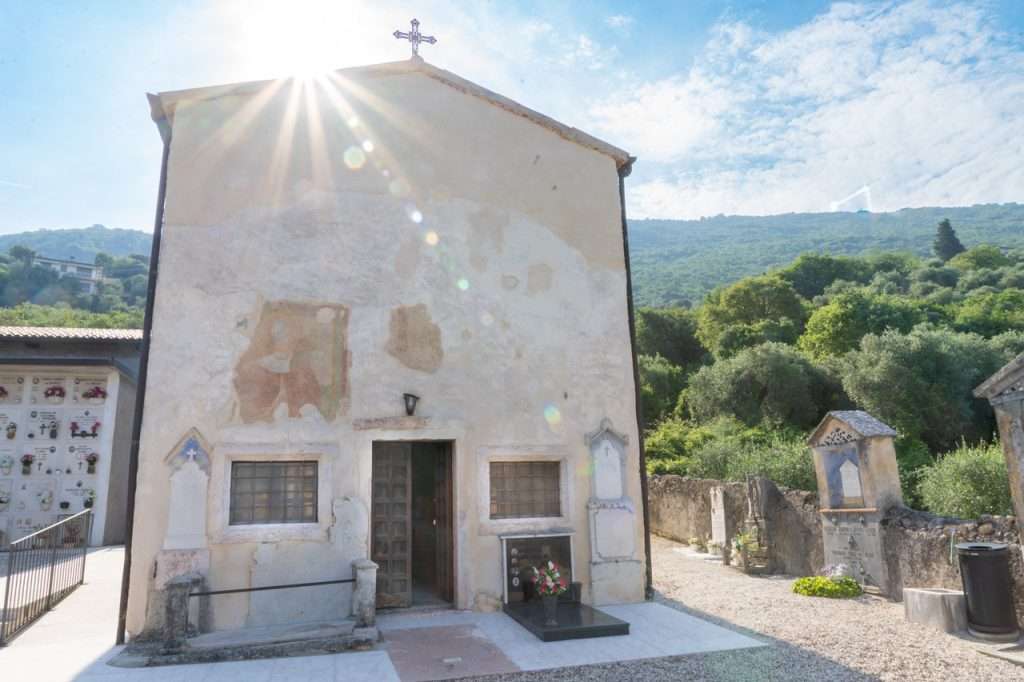
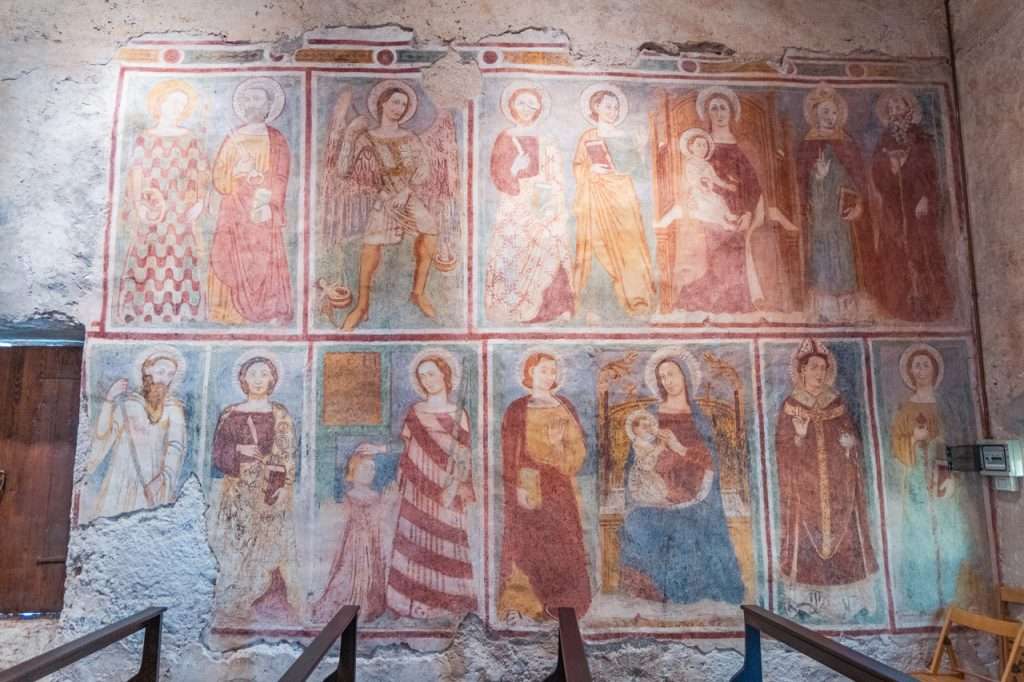
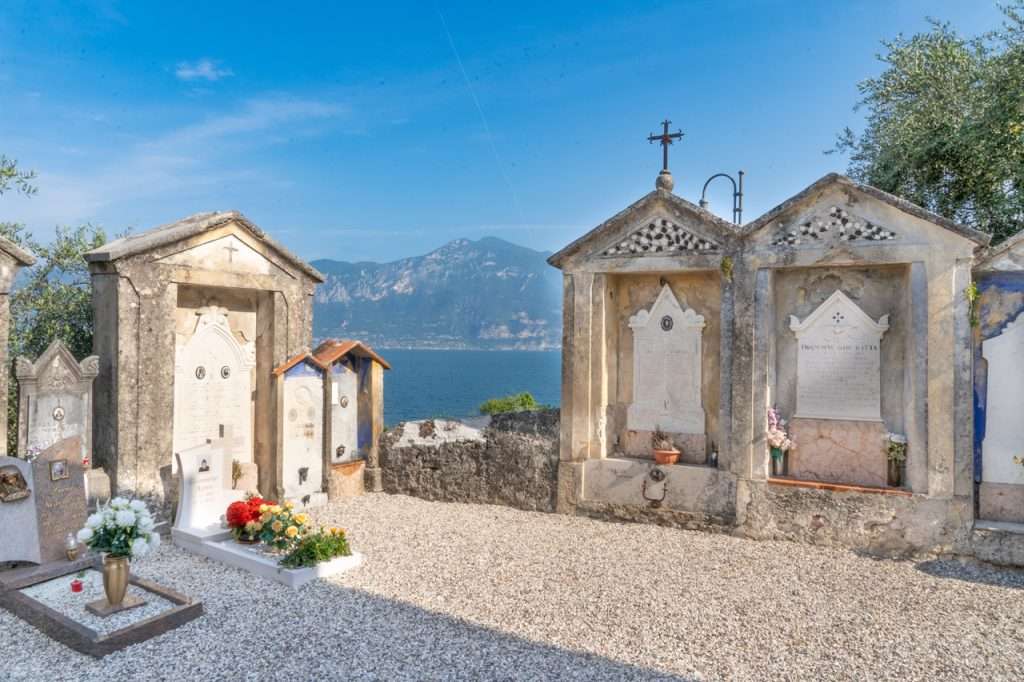
A stop on the lakefront.
Pai di Sotto is full of restaurants and pieds dans l’eau clubs, where you can take a break immersed in the blue and caressed by the lake breeze. There are also beaches to enjoy a refreshing swim, a small harbor with local fishing boats and a little further up, to the north, there is also the beautiful cycle-pedestrian path that goes from Castelletto di Brenzone to Navene di Malcesine.
We suggest you stop at the Hotel Menapace and taste the exquisite lake fish in its restaurant. You will not regret it!
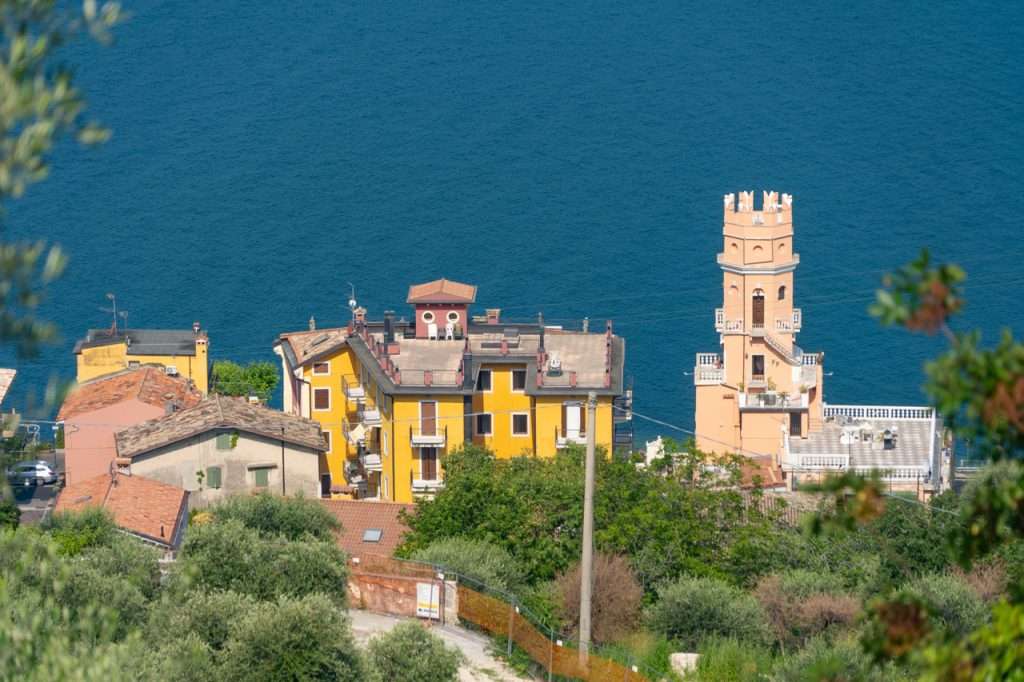
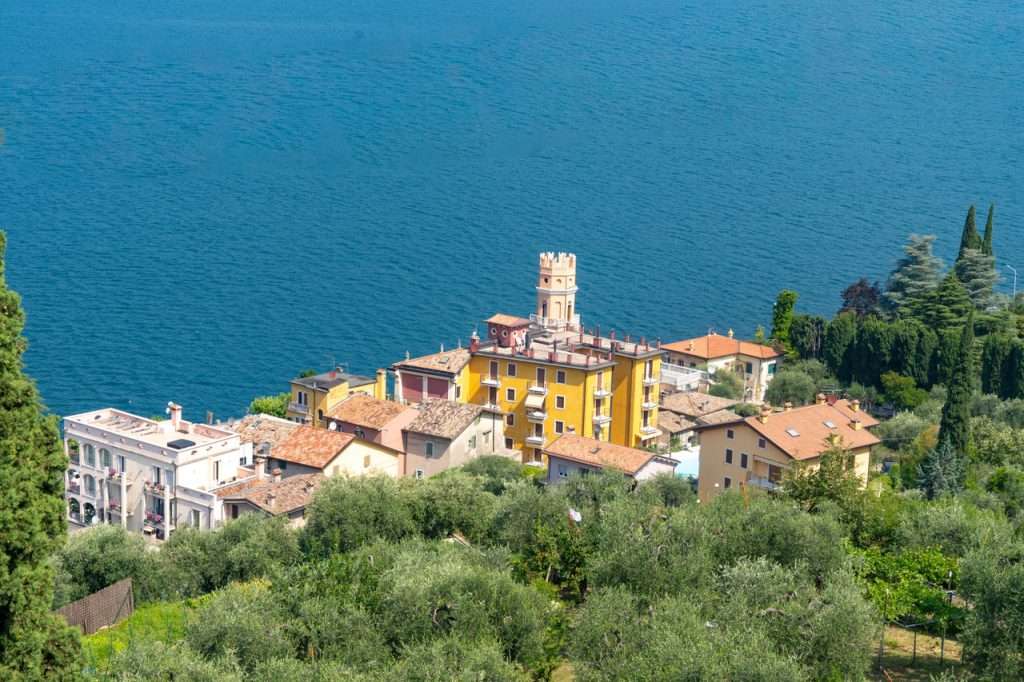
How to get to Pai and where to park.
Pai can be reached from the SR 249 road (the Veronese stretch that runs along the eastern shore of the lake): if you are coming from the south, after the town of Torri del Benaco, you will find the “Pai di Sopra” sign on the right of a traffic light with the road that goes up – or you simply have to continue a few hundred meters to reach Pai di Sotto; if you come from the north, after Castelletto di Brenzone you will immediately find the hamlet of Pai di Sotto, while the road that goes up to Pai di Sopra is on your left after the traffic light.
In Pai di Sotto you can easily find paid parking on the lakefront.
In Pai di Sopra there is a small free car park on the left before entering the village, or you can continue crossing Piazza San Marco (be aware that the passage is very narrow in some points) and park along the road.
So do you also feel a little ‘paiaroi’ after this article?
See you next time dear Outdoors!
Silvia Turazza – Garda Outdoors editorial team

